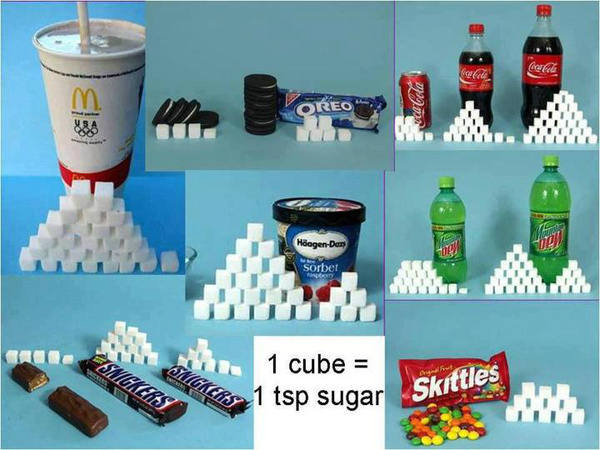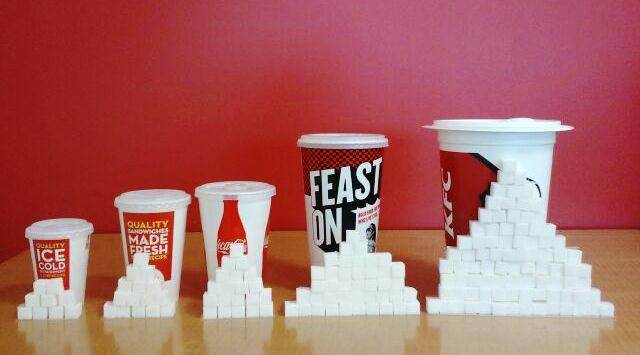What are we Ingesting?
If you read the ingredients label on a loaf of bread, you will usually find an ingredient named L-cysteine. It is a non-essential amino acid added to many baked goods as a dough conditioner in order to speed industrial processing. It’s usually not added directly to flour intended for home use. While some L-cysteine is directly synthesized in laboratories, most of it is extracted from a cheap and abundant natural protein source: human hair. The hair is dissolved in acid and L-cysteine is isolated through a chemical process.
Other sources of L-cysteine include chicken feathers, duck feathers, cow horns and petroleum byproducts. While the thought of eating dissolved hair might make some people uneasy, most Western consumers ultimately have no principled objections doing so. For Jews and Muslims, however, hair-derived L-cysteine poses major problems. Muslims are forbidden from eating anything derived from a human body, and many rabbis forbid hair consumption for similar reasons. Even rabbis who permit the consumption of hair would forbid it if it came from corpses—and since much Lcysteine comes from China, where sourcing and manufacturing practices are notoriously questionable, this is a real concern. In one case, a rabbi forbade the consumption of Lcysteine because the hair had been harvested during a ritual at a temple in India.
Chicken McNuggets contain an industrial chemical.
According to the McDonald’s Corporation, its famous Chicken McNuggets are made with ingredients including sodium phosphates, “partially hydrogenated soybean oil and cottonseed oil with mono -and diglycerides,” sodium acid pyrophosphate, ammonium bicarbonate, monocalcium phosphate, “hydrogenated soybean oil with TBHQ and citric acid added to preserve freshness” and “Dimethylpolysiloxane added as an antifoaming agent.”
At least two of these ingredients are artificially synthesized industrial chemicals. TBHQ, a petroleum derivative, is used as a stabilizer in perfumes, resins, varnishes and oil field chemicals. Laboratory studies have linked it to stomach tumors. Dimethylpolysiloxane, a type of silicone, is used in caulks and sealants, as a filler for breast implants, and as key ingredient in Silly Putty. Not that the other ingredients are any better. Because cotton is not regulated as a food crop, cottonseed oil may contain toxic pesticides that are banned in food production. It is also almost always genetically modified. Hydrogenated oils, of course, typically contain trans fats, the artificially produced fats that are unusable by the body and that drastically increase your risk of heart disease and death.
View McDonals nutritional list by clicking the link below.
& HERE (for UK infor)
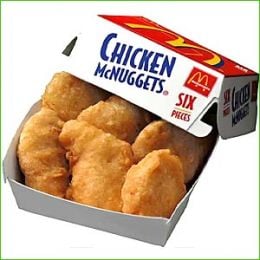
The top three most dangerous ingredients I've found in my research so far are:
1) Sodium nitrite -- causes cancer, found in processed meats like hot dogs, bacon, sausage. Used to make meats appear red (a color fixer chemical).
2) Hydrogenated oils -- causes heart disease, nutritional deficiencies, general deterioration of cellular health, and much more. Found in cookies, crackers, margarine and many "manufactured" foods. Used to make oils stay in the food, extending shelf life. Sometimes also called "plastic fat."
3) Excitotoxins -- aspartame, monosodium glutamate and others (see below). These neurotoxic chemical additives directly harm nerve cells, over-exciting them to the point of cell death, according to some Dr's. They're found in diet soda, canned soup, salad dressing, breakfast sausage and even many manufactured vegetarian foods. They're used to add flavor to over-processed, boring foods that have had the life cooked out of them.
Sodium chloride is not salt, folks!
Real salt comes from the ocean. It has dozens of minerals and trace minerals in it. If you’re salting your food with salt from the grocery store, you’re giving yourself hypertension and heart disease.
You should be using real salt instead.
Ingredients are listed on the label according to quantity; the ingredient making up the largest quantity of all the ingredients is listed first smallest quantity is listed last
Generally only those ingredients that are required by law to be listed on the label are listed. So, you never really know if there are any other ingredients in the product that are not listed on the label.
Gelatin(e)
Many products (particularly in the U.S.A) contain the gelling agent known as gelatin(e). This gelling agent is produced from boiled animal bones and the collagen/tissue in cattle and sheep legs/hooves. Gelatin(e) can be found in a wide variety of foods including cereals, biscuits, yoghurts, peanuts, candy and sweets. It can also be found in health supplements and cosmetics. Many vegetarians and vegans may presume certain products do not contain any animal ingredients, when in fact they do. It is very important for vegetarians and vegans to read all ingredients when purchasing foods and cosmetics as it is very easy to assume something will be animal free. For instance, Planters dry roasted peanuts contain gelatin(e), though one might initially presume nuts would never contain such an ingredient.
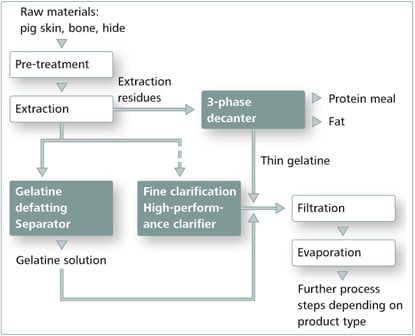
Companies Using Gelatin
Yoplait
Planters
Kellogg's
Haribo
Danone
General Mill's
Jell-O
Kraft Food's
Dr Oetker
Rowntree's
Malt-O-Meal
E Numbers
We have all heard of E numbers and we have all, one time or another, consumed a food or drink containing these food additives. Most people are also aware of the unhealthy nature of these ingredients as they produce unwanted side effects including increased hyperactivity in children. What many people are unaware of is that many of these E numbers can be derived from cows, sheep and pigs.
The list below shows the E numbers that are possibly animal derived. However, these E numbers could also be extracted from vegetables. It may be easier to simply avoid all E-numbers so as to avoid consuming a product that may contain animal derivatives.
E120 E140 E141E422 E430 E431E433 E470 E471E472a E472b E472c E472d E472e E473 E474 E475 E476 E477 E478 E491 E492 E494 E542 E570 E572
Watch out for statements like these on packages:
NATURAL FRUIT FLAVORS, with Real Fruit Juice
ALL NATURAL INGREDIENTS
NO ARTIFICIAL PRESERVATIVES
100% NATURAL
REAL FRUIT
NO PRESERVATIVES
NO ARTIFICIAL INGREDIENTS
Statements like these do not mean there are no harmful additives in the product. There may be harmful ingredients... The manufacturer hopes you'll think there are no harmful ingredients, but as you will see from the following examples, it's not true. Buying a product in a health food store does not guarantee that packaged products you buy will be free of harmful additives either. So, it's important to always READ LABELS VERY CAREFULLY." ...
"ALL NATURAL INGREDIENTS and NO ARTIFICIAL PRESERVATIVES ADDED does not mean there are no harmful additives in the product.
The ingredients from a loaf of bread that states on the label in big letters, 'ALL NATURAL INGREDIENTS,' and 'NO ARTIFICIAL PRESERVATIVES ADDED,' are: Enriched wheat flour (wheat flour, malted barley, niacin, reduced iron, thiamine mononitrate, riboflavin), water, high fructose corn syrup, yeast, wheat bran, vital wheat gluten,
butter. Contains 2% or less of each of the following: rye meal, corn flour, molasses, rolled whole wheat, salt, dough conditioners (ammonium sulfate, sodium stearoyl lactylate), brown sugar, honey, vinegar, oatmeal, soy flour, mono and diglycerides, partially hydrogenated soybean oil.
Here is an analysis of the ingredients listed above in bread.
High fructose corn syrup is basically sugar derived from corn. It is associated with blood sugar problems, depression, fatigue, B-vitamin deficiency, hyperactivity, tooth decay, periodontal disease and indigestion.
Enriched wheat flour is white flour. The bran and the germ portion of the whole wheat, which are rich in vitamins and minerals, have been refined out. To compensate for refining out approximately 20 nutrients, they add back 4 synthetic nutrients, niacin (vitamin B3), reduced iron, thiamine mononitrate (synthetic vitamin B1), and riboflavin (vitamin B2). These nutrient additives...are added to mostly refined and processed foods giving a false sense of nutritional value and can lead to nutritional imbalances.
Dough Conditioners, in general, can cause mineral deficiencies.Ammonium sulfate may cause mouth ulcers, nausea, kidney and liver problems.
Sodium stearoyl lactylate may be corn, milk, peanut or soy based, and may cause blood pressure and kidney disturbances, and water retention.
Brown sugar is frequently white sugar with molasses added. It is associated with blood sugar problems, depression, fatigue, B-vitamin deficiency, hyperactivity, tooth decay, periodontal disease and indigestion.
Mono and diglycerides may be soy, corn, peanut or fat based. They may cause genetic changes, cancer, birth defects, and allergic reactions.Partially hydrogenated soybean oil is associated with heart disease, breast and colon cancer, atherosclerosis and elevated cholesterol.
So, ALL NATURAL INGREDIENTS and NO ARTIFICIAL PRESERVATIVES ADDED does not mean there are no harmful additives in the product. The manufacturer hopes you'll think that, but as you can see from the above list of ingredients, it's not true."
“Confectioner’s glaze”—a common coating on candies and pills—is made from the bodily excretions of an Asian beetle.
Confectioner’s glaze, also called pharmaceutical glaze, resinous glaze, pure food glazenand natural glaze, is a common ingredient in candies and pills. By any name, it’s the same ingredient as shellac, the chemical that they sell in hardware stores and that is used for sealing and varnishing wood floors (and used to be used in electronics).
Shellac is actually a chemical secreted by female lac bugs (Laccifer lacca), a type of “scale insect,” in order to form sheltering tunnels as they travel along the outside of trees. It is extracted for industrial use by scraping bark, bugs and tunnels off of trees in Asian forests and into canvas tubes. The tubes are then heated over a flame until the shellac melts and seeps out of the canvas, after which it is dried into flakes for sale. Before use in food or as varnish, the shellac must be re-dissolved in denatured alcohol. Instead of shellac, some food producers use a corn protein called zein.
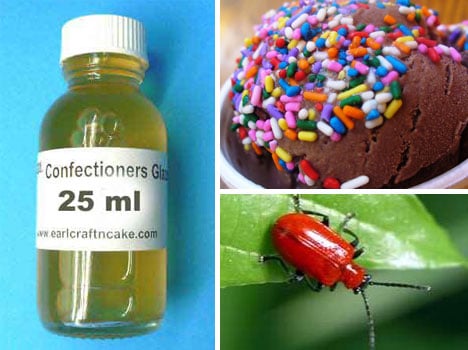
.... here is an excerpt from the book
FOOD ADDITIVES: A Shopper's Guide To What's Safe & What's Not.
"There are more than 3000 different chemicals that are purposefully added to our food supply. The testing for the safety of these chemical additives is generally done by the company that wants to produce the chemicals or to use the chemical additives in the foods they produce. The Delaney Clause of the 1958 Food Additives Amendment states that any additives shown to cause cancer in humans or animals are not permitted to be added to our food. However, political pressure has caused the FDA to relax these standards and allow small amounts of cancer causing substances to be used in foods.
Even if all of the food additives used in our foods were safe individually, rarely does any food have only one additive in it. Testing for additive safety has been done for individual additives, not for combinations of additives. Additives that are safe individually may be harmful in certain combinations. Nobody knows the effects of the many different additives used in the thousands of different combinations."
Worst Food Additives
Here is a list of some of the worst food additives.
Check food labels to make sure that what you buy does not contain these ingredients.
Acesulfame-K - "Sunette"; may cause low blood sugar attacks; causes cancer, elevated cholesterol in lab animals.
Artificial colors - contribute to hyperactivity in children; may contribute to learning and visual disorders, nerve damage; may be carcinogenic
Artificial sweeteners - associated with health problems; see specific sweetener.
Aspartame - may cause brain damage in phenylketonurics; may cause central nervous system disturbances, menstrual difficulties; may affect brain development in unborn fetus.
BHA - can cause liver and kidney damage, behavioral problems, infertility, weakened immune system, birth defects, cancer; should be avoided by infants, young children, pregnant women and those sensitive to aspirin.
BHT - see BHA; banned in England.
Blue No. 1 - see FD&C colors.
Blue No. 2 - see FD&C colors.
Brominated vegetable oil - linked to major organ system damage, birth defects, growth problems; considered unsafe by the FDA, can still lawfully be used unless further action is taken by the FDA .
BVO - see brominated vegetable oil.
Caffeine - psychoactive, addictive drug; may cause fertility problems, birth defects, heart disease, depression, nervousness, behavioral changes, insomnia, etc.
Citrus Red No. 2 - see FD&C colors.
FD&C colors - colors considered safe by the FDA for use in food, drugs and cosmetics; most of the colors are derived from coal tar and must be certified by the FDA not to contain more than 10ppm of lead and arsenic; certification does not address any harmful effects these colors may have on the body; most coal tar colors are potential carcinogens, may contain carcinogenic contaminants, and cause allergic reactions.
Free glutamates - may cause brain damage, especially in children; always found in autolyzed yeast, calcium caseinate, enzymes, flavors & flavorings, gelatin, glutamate, glutamic acid, hydrolyzed protein, hydrolyzed soy protein, plant protein extract, protease, protease enzymes, sodium caseinate, textured protein, yeast extract, yeast food and yeast nutrient; may be in barley malt, boullion, broth, carrageenan, malt extract, malt flavoring, maltodextrin, natural flavors, natural chicken flavoring, natural beef flavoring, natural pork flavoring, pectin, seasonings, soy protein, soy protein concentrate, soy protein isolate, soy sauce, soy sauce extract, stock, whey protein, whey protein concentrate, whey protein isolate, anything that is enzyme modified, fermented, protein fortified or ultrapasteurized and foods that advertise NO MSG; see MSG.
Green No. 3 - see FD&C colors.
Hydrogenated vegetable oils - associated with heart disease, breast and colon cancer, atherosclerosis, elevated cholesterol. MSG - may cause headaches, itching, nausea, brain, nervous system, reproductive disorders, high blood pressure; pregnant, lactating mothers, infants, small children should avoid; allergic reactions common; may be hidden in infant formula, low fat milk, candy, chewing gum, drinks, over-the-counter medications, especially children's, binders and fillers for nutritional supplements, prescriptiona nd non-prescription drugs, IV fluids given in hospitals, chicken pox vaccine; it is being sprayed on growing fruits and vegetables as a growth enhancer; it is proposed for use on organic crops.
Neotame - similar to aspartame, but potentially more toxic; awaiting approval.
Nitrates - form powerful cancer-causing agents in stomach; can cause death; considered dangerous by FDA but not banned because they prevent botulism.
Nitrites - may cause headaches, nausea, vomiting, dizziness; see nitrates.
Nutrasweet - see aspartame.
Olean - see olestra.
Olestra - causes gastrointestinal irritation, reduces carotenoids and fat soluble vitamins in the body.
Partially hydrogenated vegetable oils - see hydrogenated vegetable oil.
Potassium bromate - can cause nervous system, kidney disorders, gastrointestinal upset; may be carcinogenic.
Red No. 3 - see FD&C colors.
Saccharin - delisted as a carcinogen in 1997, however, studies still show that saccharin causes cancer.
Sulfites - destroys vitamin B1; small amounts may cause asthma, anaphylactic shock; dangerous for asthma, allergy sufferers; has caused deaths; banned on fresh fruits and vegetables, except potatoes.
Sweet 'N Low - contains saccharin.
Yellow No. 6 - see FD&C colors
U.S. law grants the Coca-Cola company a unique exemption to import coca leaves while prohibiting anyone else from importing what might otherwise become a popular superfood.
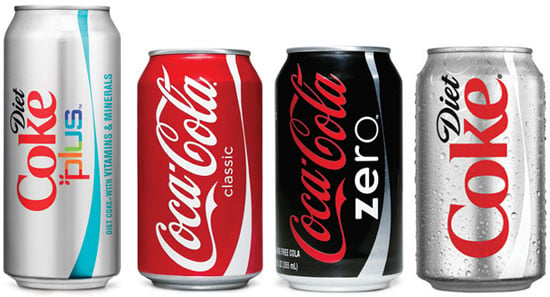
Coca leaves have been chewed and consumed as tea for thousands of years in the high Andes. They are rich in many essential nutrients; they ease respiratory and digestive distress and are a natural stimulant and painkiller. Indigenous tradition and scientific studies have both confirmed that in their natural form, the leaves are completely safe and non-addictive—it takes intensive processing and toxic chemical ingredients to produce cocaine. That’s why more and more cocacontaining products have started to hit the market in Andean countries in the past few years.
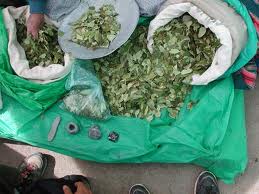
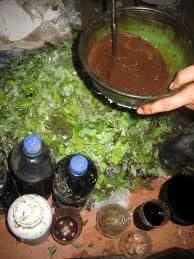
Coca-Cola, by the way, used to literally contain cocaine in its original formula. The practice was halted in 1903, but the name persisted. The “coca” part of “coca-cola” is derived from the coca plant, and the “kola” comes from the kola nut which also flavored the original beverage.
Yet the United States still aggressively pursues an eradication policy that encourages Andean governments to spray their forests with toxic chemicals to eliminate this medicinal crop. It is illegal to import or possess the leaves under U.S. law—unless you’re the Coca-Cola company. In an effort to preserve the traditional flavor of the best-selling drink, the company long ago convinced the U.S. government to exempt it from the law. But don’t worry: the chemicals that can be used to make cocaine—and that provide many of the leaves’ benefits—have all been removed from Coca-Cola.
…
4.2 grams = 1 teaspoon of sugar = 1 cube !Someone ought to get an award for this. We know the facts, but this
brings it into perspective quickly, doesn’t it? Each cube is a teaspoonful.Now someone needs to do this with salt!
Lots more to follow ...
© 2014 Majority NOT Minority Ltd - All rights reserved.
No republication of this material, in any form or medium, is permitted without express permission of the author
